Post by volunteer Ashley Keates, Portland State University
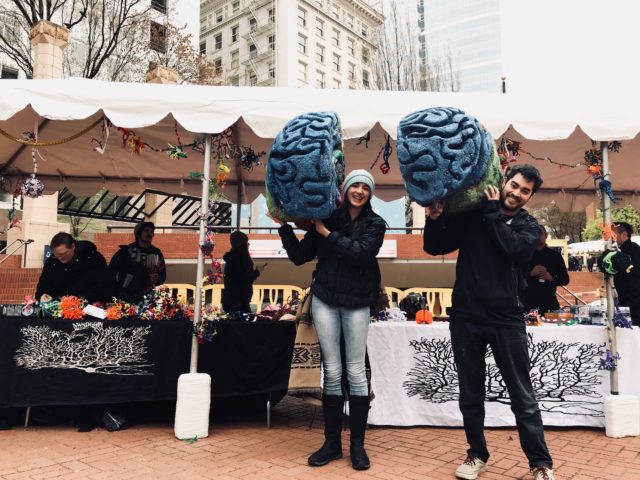
Ashley Keates (left side; right hemisphere) & Max Barsana (right side; left hemisphere)
Construction:
I arrived one evening after my Sleep & Dreams class at PSU to pick up styrofoam I learned I could use to construct a BIG NOGGIN for the March for Science coming up the following week. Little did I know what the project would involve. After chatting with Mark Rutledge-Gorman from the Portland Alcohol Research Center at OHSU about our mutual love for mountain climbing and hiking around the beautiful PNW, I strapped large pieces of styrofoam from his garage to the top of my car and crossed my fingers they wouldn’t blow off on the freeway.
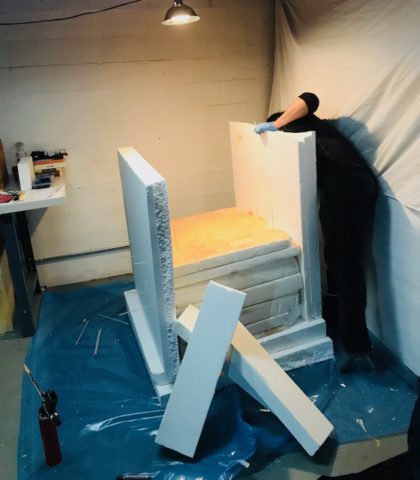
Once the foam made it safely into my studio apartment, I started doing research on foam carving. I knew that I wanted to split the hemispheres and have the inside carved too. I want to add LED lights to highlight specific brain networks and neuronal activity. Originally I wanted to add a fiberglass coating for durability and smoothness…
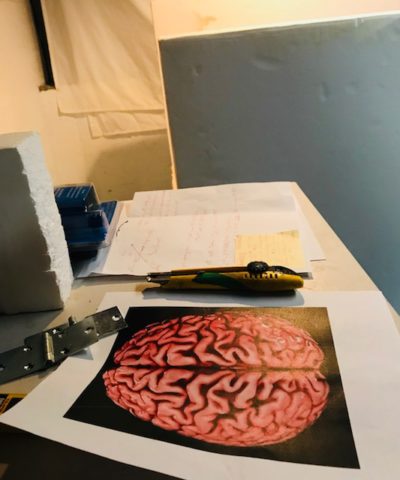
I had all these ideas swimming in my head and needed to figure out what was actually plausible with the tools I had available and the time frame. I found some helpful youtube videos and then decided to reach out to my social media community to see if any of my friends who were artists had information or resources for creating styrofoam molds. Max Barsana whom I’ve known for years replied that he is a professional mold maker and fabricator and could help. What great luck! So our scientific artistic journey began!
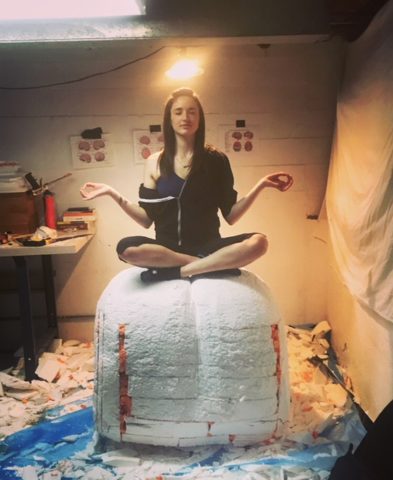
First part of construction started Sunday evening after myself, Max, and Noggin Arts Coordinator Jeff Leake talked over a little strategy and conception for the piece. I drove the styrofoam to Max’s art studio space and we constructed a dense cube out of the styrofoam. We used insulating foam sealant to “glue” pieces together and to fill in gaps. We drew very vague curved shapes with sharpies to use for cutting it down to looking more like a brain.
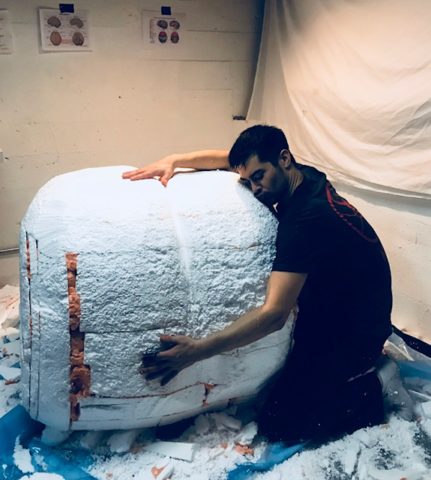
(At first, it looked more like a butt!)
The cutting process was slow and incredibly messy. If you’ve ever sawed through styrofoam then you know it sounds worse than nails scratching down a chalkboard or a mountain lion screeching after it stubbed its paw. Max and I communicated constantly with what we were cutting or drawing to be sure the brain was as symmetrical as possible. Every single piece would be carved by hand. By day two we had a “winter wonderland” of styrofoam to play in and the basic brain shape…
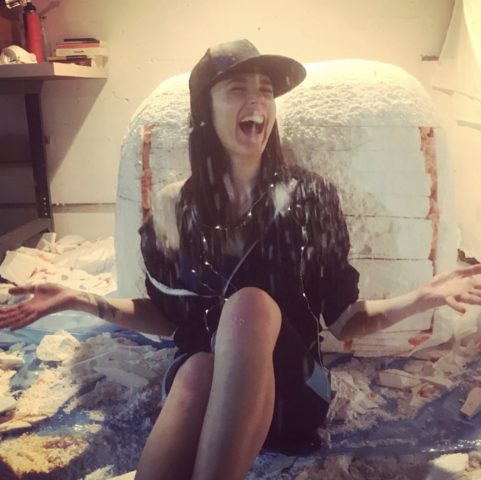
As the week progressed we continued to fine tune the brain further and further. We needed the lobes to be accurate, proportionate, and visually stimulating. We looked at multiple diagrams which represented the brain in slightly different artistic ways. In carving out the sulci and gyri Max started at one end of the brain and I started at the other. We started by drawing with a sharpie and noticed it was taking too long (both of our slight OCD kicking in).
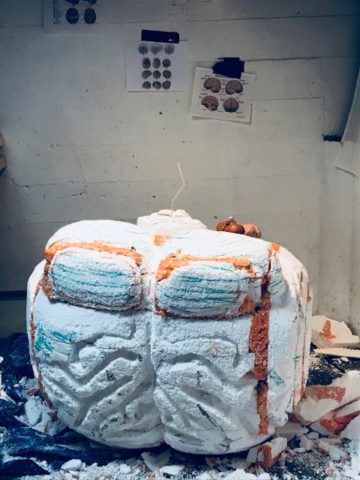
It was when we both decided to just start carving that I noticed the biggest change. We both went into our own creative default modes and got some really good work done. Rule #1 for this type of work is to switch sides so that the artistic styles of each person blend in to each other and symmetry can be saved. We made a few anatomical adjustments afterwards (such as the Sylvian fissure and central sulcus) to be sure the brain was as accurate as possible.
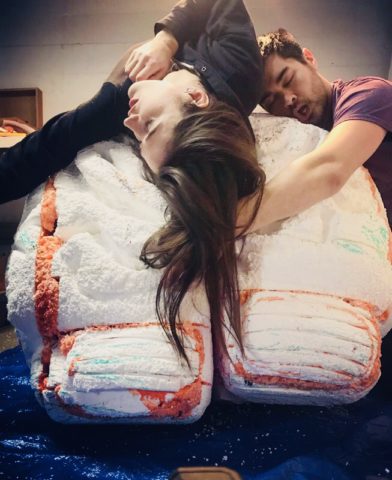
By the end of the week we were absolutely exhausted but equally as excited for this labor of love to come to life. I took pieces of fairly rough sandpaper to the brain so that it had a smoother and more brain like appearance. This also helped prepare for painting the lobes. When it was time to paint we decided to go a particular route to keep the brain light enough to carry during the March for Science. This required multiple layers of paint for the styrofoam to soak up. We chatted about what colors felt like the right fit for the lobes they were going to represent. What is the color of sound? Facial recognition? Personality? Motor control? Etc. There was more and more fine tuning.

If you were a frontal lobe, what color would you be?
Eventually the final step of LED light implementation to represent the default mode network was completed and ready to be held up by volunteers that morning.
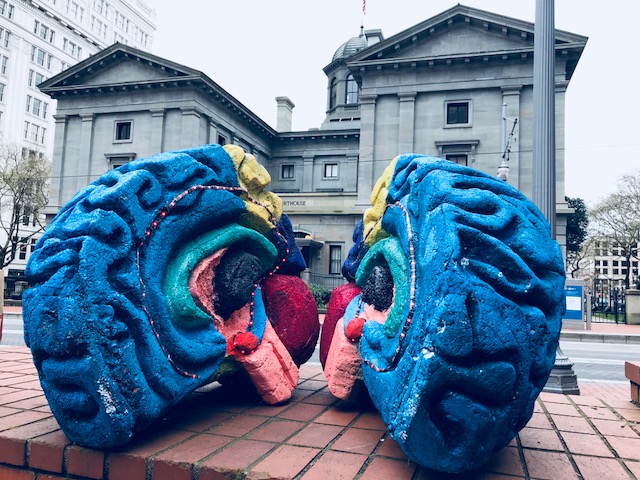
The March:
I was expecting to have a giant brain strapped to the top of my Subaru just like I usually do with my kayak. Not happening! We ended up fitting it in the back of a covered truck on the way to Pioneer Square to join NW Noggin and others during the March for Science.
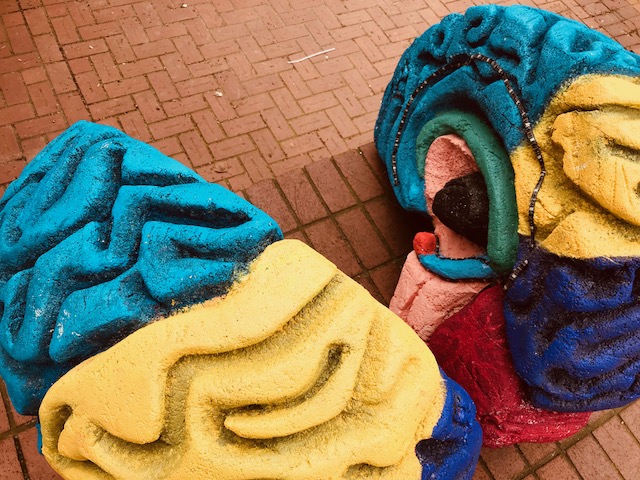


Once we got it out it was entertaining to see the surprised, confused, and excited faces of the people of Portland who are more or less used to seeing bizarre events occur downtown.

The giant brain was quite awkward to carry while we tried balancing the temporal lobes on our shoulders or the frontal lobes on top of our head, or the cerebellum from below.

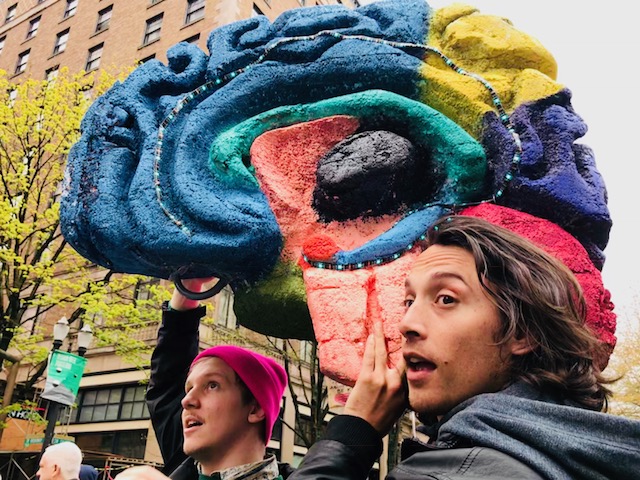
We had support at times from our friendly glial cell friends! Supporting these networks isn’t an easy task but it’s a necessary one. Holding the big brain stirred up some rapid firing of neurons with comments such as “Wow! I like your brain!,” “Are you a neuroscientist?!,” “How heavy is that brain?” – and many “Brain selfies” took place.
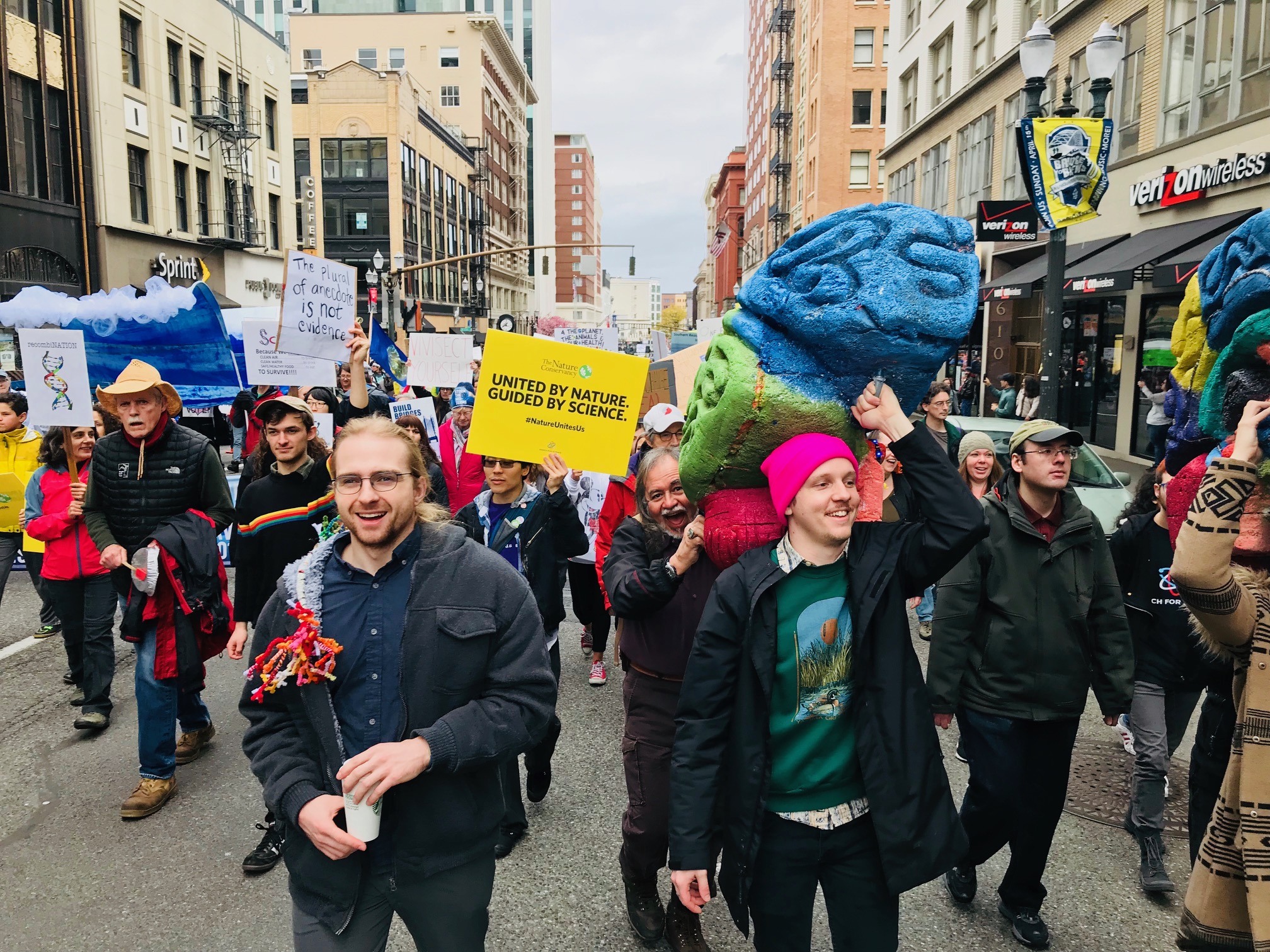
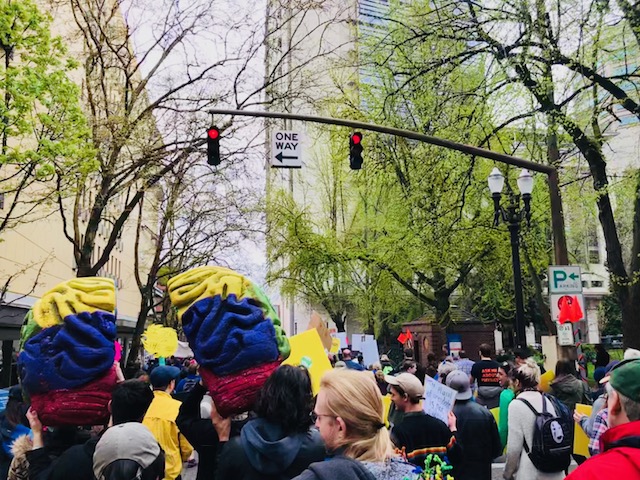
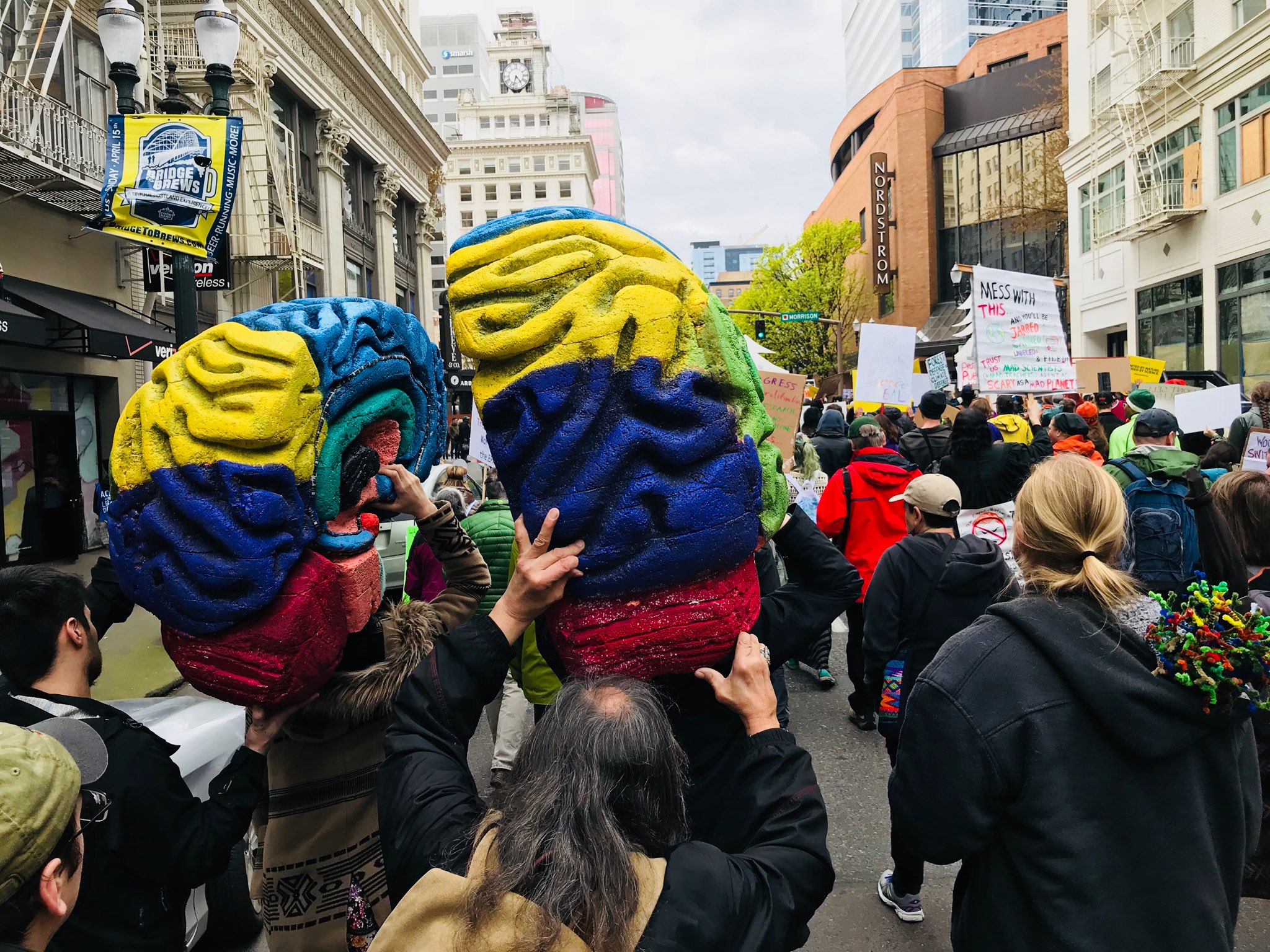
I loved seeing people get excited over the brain, NW Noggin, art and science. The giant brain was built from copious hours, late nights, tedious work and a lot of joy in community outreach, especially with youth who are such enthusiastic learners, artists and natural scientists!
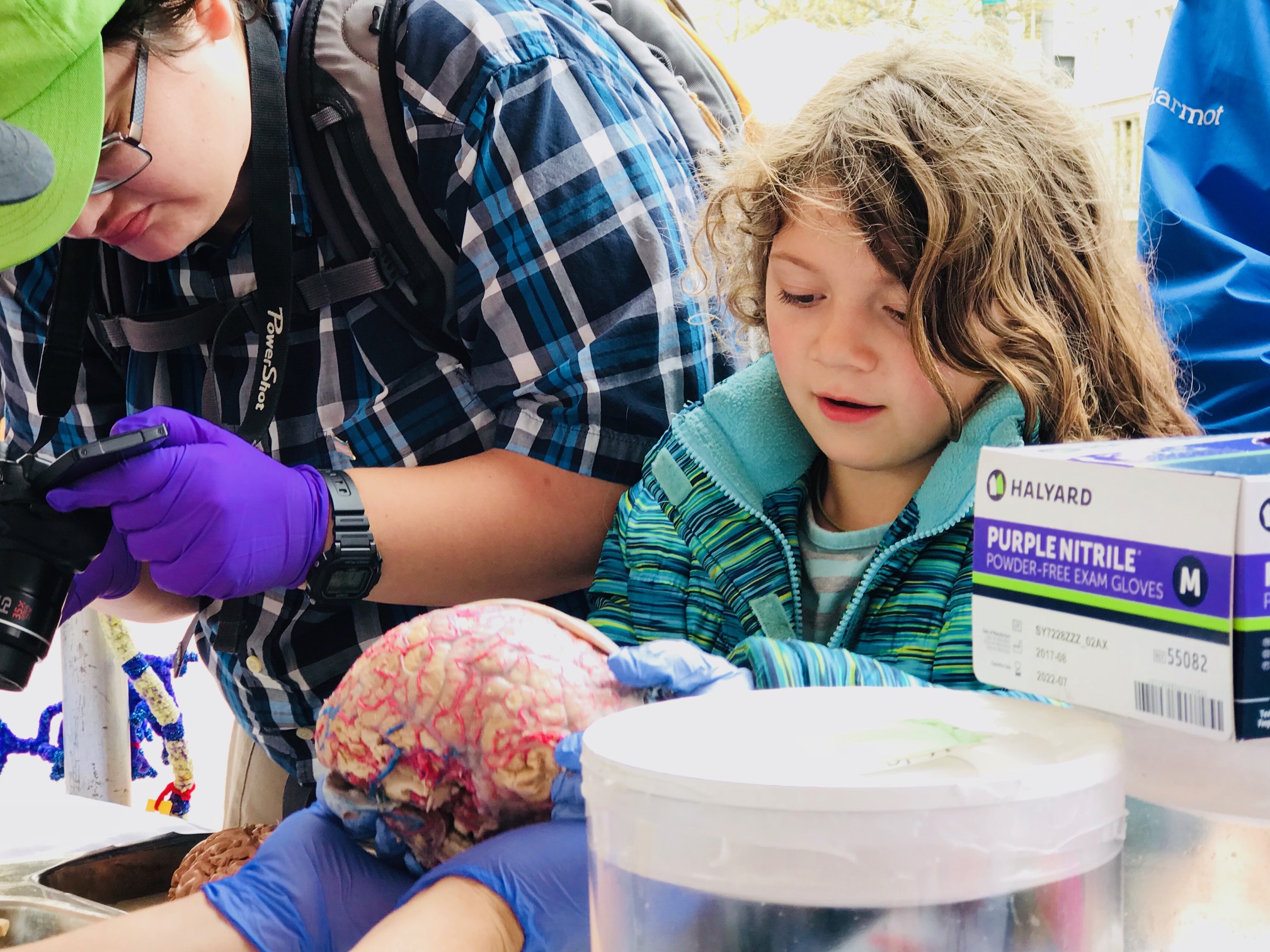
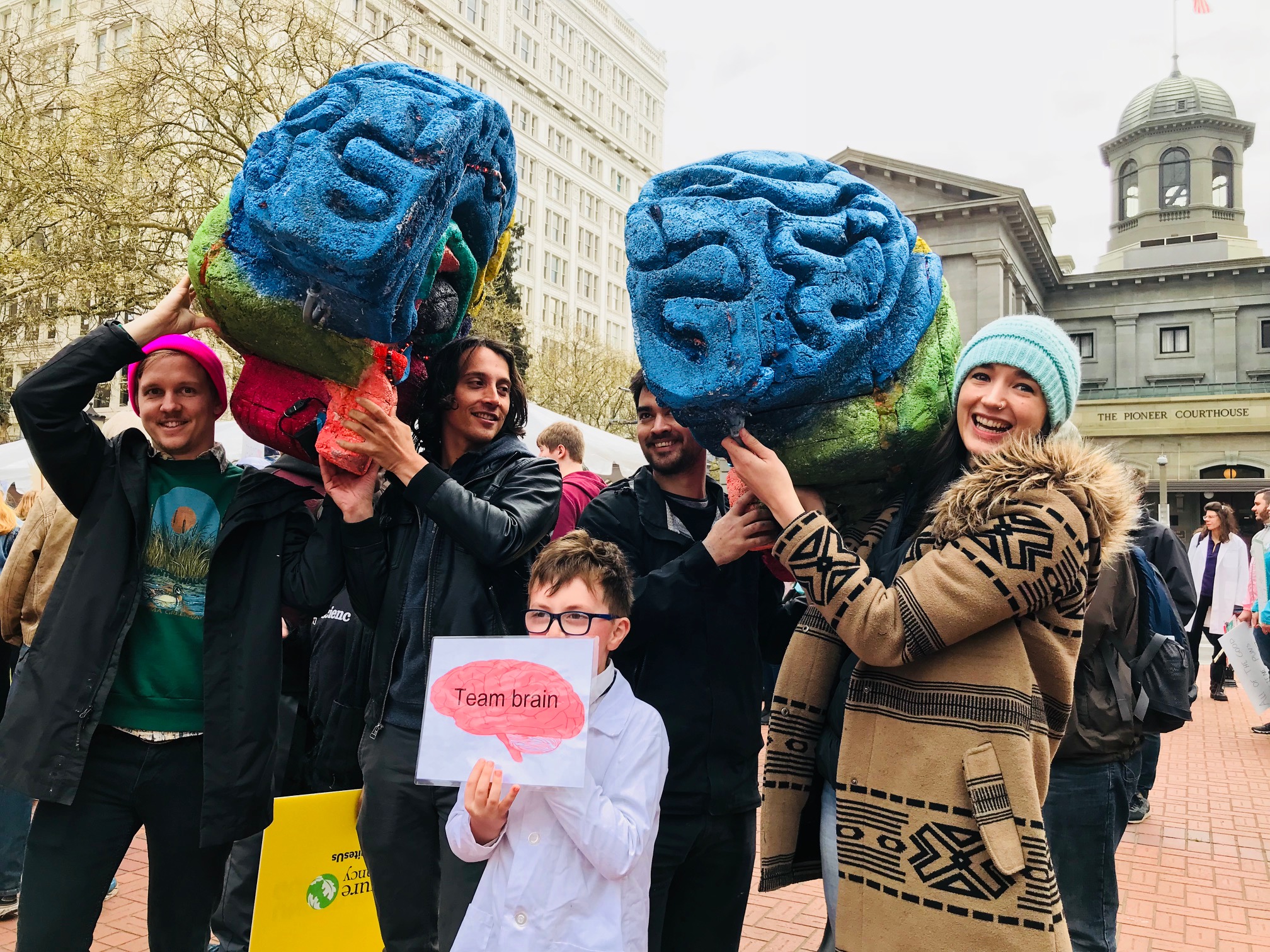
LEARN MORE: Gray Matter Marching


